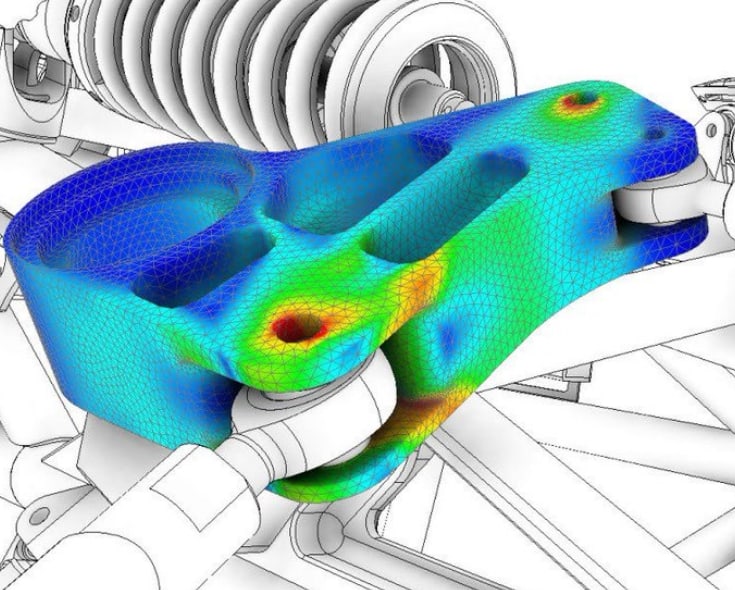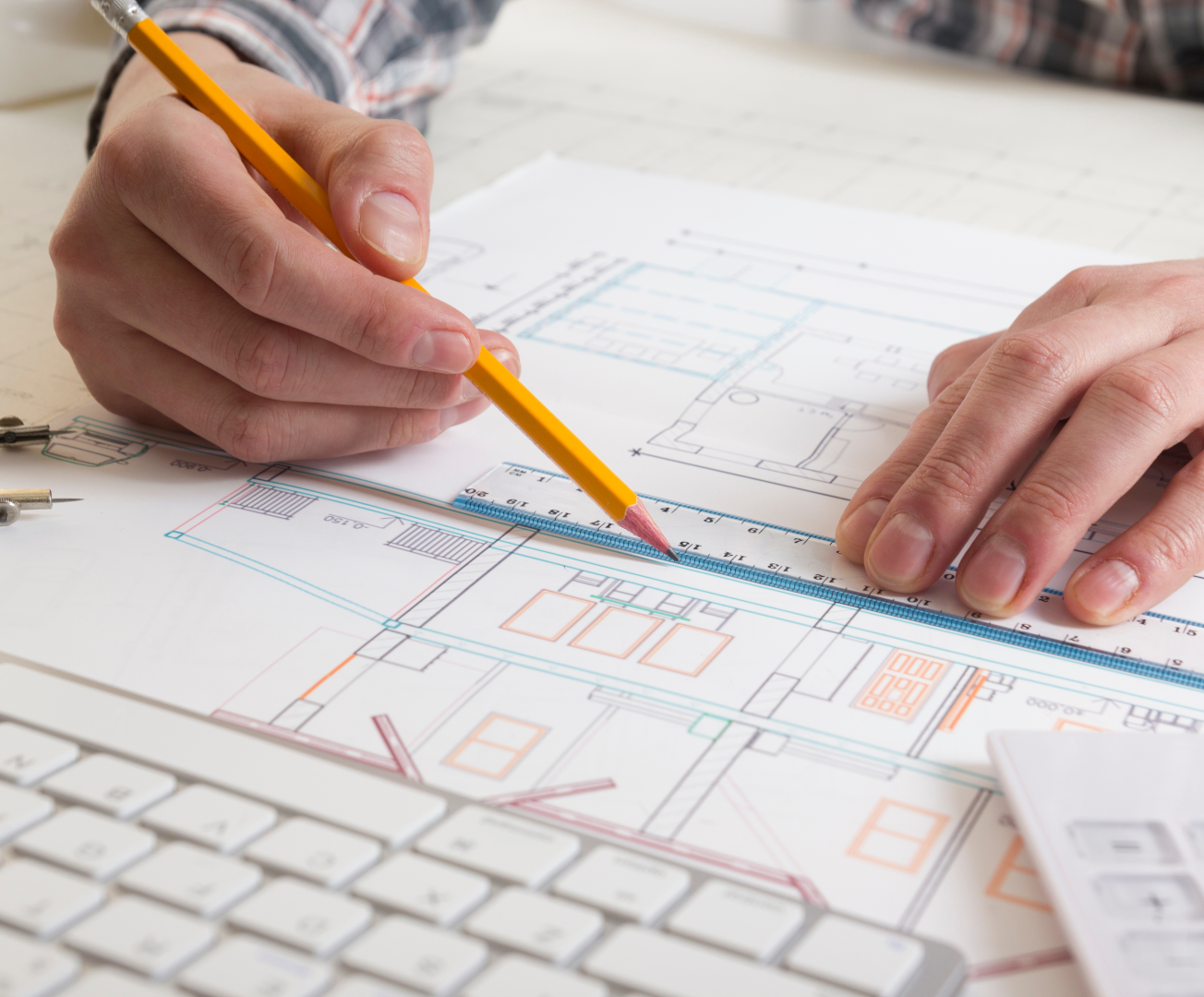“The Best Way To Predict Your Future Is To Create It” – Unknown.
As technology continues to develop and the world remains focused on sustainability, the next decade will bring more changes than we’ve seen in the last 100 years. It’s highly disruptive and has a significant impact on a company’s bottom line. That’s why businesses need to keep up with the latest technologies and trends impacting their industry—or risk getting left behind.
So let’s talk about Industry 4.0 solutions. Today, companies struggle to implement into their operation the following technologies:
- Automation
- Artificial intelligence (AI)
- The Internet of Things (IoT) and Connectable Devices
- Robotics
- Additive Manufacturing (3D Printing)
The above technologies will have a major effect on how companies operate. The lack of access to talent is the largest problem facing businesses today and in the future. All technology must be set up and implemented into a company’s workflows.
Your labor pool is sized and was hired to solve your project challenges. Your team needs to focus on the day-to-day work that keeps your business running.
Up to this point, companies have relied on the same workforce to implement IoT, robotics, automation, additive manufacturing, and other Industry 4.0 solutions. The workforce that has existed for years isn’t prepared to use these new technologies and methods. Moreover, do they even have time to learn, master, and implement Industry 4.0 technologies?
On average, engineers have 7.3 different responsibilities. Adding one more responsibility means something else is not getting done. Over time this approach means the company is being left behind – slowly.
The engineering labor shortage isn’t going to end soon. Engineers are in high demand for their valuable skills. There are more jobs in engineering and related fields than workers to fill them. The problem is even worse where hot new markets such as automation, artificial intelligence (AI), the Internet of Things (IoT), and robotics are concerned.
According to a poll in 2017 by Deloitte and SEMI, 82 percent of executives report a shortage of technical talent. Eighty-eight percent of executives believe changes in the business environment will require new skills and talent. A large majority (77 percent) believe there’s a critical talent shortage within the industry, and another 14 percent feel there will be a severe talent shortage within the next three years.
We now know the concerns identified in this survey were valid. As seen the past few years, the unemployment rate for engineers has been at historic lows, and accordingly, engineers are leaving for new positions at higher rates and taking longer to replace
According to the US BLS, there are around 300,000 mechanical engineers in the USA, with an unemployment rate of 1%, which means around 3,000 mechanical engineers are unemployed and looking for employment. In April, there were 29,647 mechanical engineering postings on Indeed. This means that there are 9 openings for every unemployed candidate. To make things worse, it has been estimated that only 15% of all openings are advertised on job sites like indeed.
It makes the ratio 60:1. Sixty openings for every single unemployed mechanical engineer. As a result, it is hard to keep and replace engineers. Over time, the digital transition will reduce the amount and number of responsibilities engineers have, but you’ll have to build and maintain the digital system first.
The question is, How will companies make the shift to Industry 4.0 without consistent access to experienced talent? That’s a question on the minds of many business leaders as they consider how to implement Industry 4.0 and sustainability solutions while building their company’s workforce.
How Are Companies Going To Implement Industry 4.0 And Sustainability Solutions Without Access to Experienced Talent?
Pure Prime Solutions is here to help companies implement Industry 4.0, Digital Transformation, and Sustainability solutions. We provide consistent access to the experienced talent needed to build and maintain your digital systems.
For many companies, four central digital technologies save time, reduce costs, and allow for improved product safety. These include Simulation and Digital Twin, Design for Manufacturing and Assembly (DfMA), Digital Thread, and Design Automation – resulting in a Digital Transition and a Sustainable Future.
These technologies are not new – they’ve been around for decades – but they were once only available to very large companies with huge budgets. Computing power has become a commodity, but these technologies can be difficult to implement without a high level of expertise. For that reason, Pure Prime Solutions provides access to top-tier talent who can help companies develop these systems quickly and efficiently.
Sustainability
The word “sustainable” is thrown around a lot these days. In the past, the word sustainability was mostly used for environmental issues. Today, companies are talking about it to show that they’re invested in their communities and the future of business.
What does it mean for a company to be sustainable? How do you know if you’re doing business with one? Good questions! Sustainability is about balance. It’s about balancing the manufacturing cost today and the total cost of ownership for the customer tomorrow.
Companies need to take steps today that won’t come back to bite them tomorrow. Simply, it’s about being smart about long-term success.
At Pure Prime Solutions, we embrace sustainability because we understand that our success relies on our customers’ success. Our products are designed for long-term success, and our service continues long after delivery. We are invested in our clients’ businesses because we know that when they succeed, so do we.
Simulation And Digital Twin Technologies
As technologies like Simulation and Digital Twins become more and more prevalent in engineering, companies are looking for ways to implement these technologies into their workflows. We at Pure Prime Solutions are here to help!
Imagine a world where engineers design, test, and iterate product designs through a simulation environment before fabricating a single prototype. Simulations are now fast enough to run hundreds of iterations to examine a product’s full life cycle in hours or days. The simulations are precise enough to understand the smallest effects on the design and manufacturing process. And thanks to the automation of simulation processes (and digital twins), we can now take those simulations beyond the traditional R&D labs and onto the shop floor.
In the last few years, innovation in the simulation space has seen an explosion of innovation, with advances in Hardware, Software, and Machine Learning. We are no longer constrained by an inability to run complex simulations. For example, manufacturing simulation is used only 37% of the time during the product design phase. Sometimes, simulation wasn’t used even after a failure.
Why? It’s not price or time. Simulation capability has never been cheaper or faster.
It lacks access to qualified talent to run and analyze the simulation.
Why Would You Want to Simulate?
Simulation allows for faster development times and significant cost savings by reducing the number of physical prototypes needed throughout the development process. Many assumptions have to be made when designing products. Simulation lets you virtually test those assumptions to be confident in your design before any physical prototypes are built or a design is manufactured.
We’ve never been closer to making digital manufacturing a reality.
But there’s a huge gap between the promise and reality of simulation technology today. Many companies have invested heavily in simulation tools. Still, they cannot realize their full value because they don’t have the right in-house talent or the time to build, run, and analyze the simulation models.
So, What Is A Digital Twin?
A Digital Twin is a live digital representation of an object created through simulation and CAD software. A digital twin allows you to see how your product reacts under operational conditions. Digital twins enable the physical world to be connected to the digital world.
A digital twin is a virtual model of a physical asset that enables analysis and simulation of the asset and its environment to predict future behavior. Think about it as a physical twin in real-time.
Having a digital twin is not new; Industries have been using them for specific purposes over the past few decades. For example, NASA has used digital twins to simulate rockets and rovers.
Industries started looking at digital twins more seriously in recent years as the technology matured and costs fell. Indeed, many companies are now looking at creating digital twins of their assets as part of their digital transformation journey.
Design For Manufacture And Assembly (Dfma)
Design for Manufacture and Assembly (DfMA) is a design process for creating products that are easier, faster, and less costly to manufacture. DfMA also reduces waste, delivers better quality, and increases sustainability.
Design for Manufacturing and Assembly is not a software package or set of tools. It’s a design process used to optimize a product. Manufacturing engineering and production knowledge are combined with early-stage design input to ensure that the final product will be easy to manufacture on time and within budget.
DfMA is not a one-size-fits-all solution. It will not replace every aspect of how we currently manufacture and assemble products. But it has the potential to transform many aspects of how manufacturing happens in North America as we know it today – bringing new efficiencies to manufacturers through increased automation and improved productivity.
Design for Manufacture and Assembly (DfMA) is not a new concept. However, it is perhaps more relevant today than ever before. The DfMA approach can be applied to almost any industry.
We are seeing increased interest in this approach. This interest comes from architects, engineers, construction, and manufacturing professionals. They’re looking to innovate, reduce costs and add value to their projects.
What Is Design For Manufacture And Assembly?
Designing for Manufacture means adapting the design of an end product to take advantage of the capabilities of the production process. In other words, designing a product in a way that makes it as efficient as possible to manufacture. Design for assembly takes this a step further by focusing on how the different parts of the product will come together as a whole.
Why Use Design For Manufacture And Assembly?
We’re here to make your life easier.
We use the DfMA design approach, which looks at how products are manufactured and assembled to reduce the number of components needed, eliminate unnecessary assembly operations, increase ease of assembly, and reduce production time.
This means:
- 34% less rework!
- 60% less assembly time!
- 45% less cost!
- 73% less tooling!
- 22% less labor!
Design Automation
Manufacturers worldwide are under increasing pressure to deliver better, more robust products at a lower cost. Customers demand shorter lead times, more customization, and higher quality products. To stay ahead of the competition, you need to be able to provide your customers with what they want, when they want it and how they want it.
You are probably doing one or more of the following:
- Configuring standard products to solve your customers’ requirements
- Creating similar designs by copying and editing an existing design
- Continually reproducing 2D drawings and BOMs
- Performing repetitive calculations and analysis
- Manually updating documentation
Each activity above adds extra engineering tasks, leading to overutilized resources and increased costs. These inefficiencies put pressure on your engineering department. Your engineers are overworked, with less time to innovate.
Why Use Design Automation?
Companies must continually innovate to stay ahead of their competitors, requiring top-notch engineers. Engineering departments are often understaffed and overworked. Keep that in mind. They open the door to errors, rework, backlogs, and delays, when designs must be re-engineered from scratch or documentation, is created and updated manually.
These operations take time. As products become more complex, there’s little time to check every detail carefully. Design automation helps you meet these challenges and improve your workflows by:
- Reducing errors and rework: Ensuring that products are designed the first time correctly.
- Reducing manual work: Automating tedious tasks such as creating and updating models, drawings, and other documentation.
- Improving collaboration: Capturing engineering knowledge and intent in a reusable form and sharing it across teams and projects.
- Scaling to downstream processes: Streamlining higher-level components or systems development from existing assets.
Automation is now seen as essential for businesses of all sizes. Pure Prime Solutions can help your business implement automation to streamline tasks and boost efficiency, saving you time and money with reduced stress.
Digital Thread
Pure Prime Solutions was born on the premise of creating a better future. With decades of experience in the high-tech industry, we understand how technology and business processes are combined to help organizations navigate digital transformation.
Our engineering solutions focus on helping companies improve their business processes and streamline their operations through technologies such as IoT, AI, and Machine Learning. We believe that by properly implementing these technologies, companies will achieve unprecedented efficiency and productivity, thus improving their bottom line.
We are in an exciting time of technology advancements, a new ‘digital’ age. The Industrial Internet of Things (IoT), industrial analytics, and artificial intelligence (AI) transform manufacturers’ operations.
At Pure Prime Solutions, we implement digital threads that connect your business data throughout the product lifecycle, giving you valuable insights into your processes and products. The digital thread provides a holistic view of your operations, from product design to production, logistics, sales, and service.
The digital thread enables you to make decisions based on real-time data about your operations, customers, and supply chain partners. You gain new insights into operational performance and customer behavior patterns and preferences. You can respond quickly to changing market conditions and predict potential equipment problems before they occur to resolve them before affecting your productivity or profitability.
Digital transformation is a top priority for manufacturing organizations worldwide. With cloud-based technology, you can take advantage of the latest innovations in digital engineering and manufacturing technologies. The digital thread is at the heart of Industry 4.0.
So What Does That Mean?
We live in a data-driven world. The World Economic Forum projects that by 2025 463 exabytes (1 exabyte = 1,000,000 TB) of information will be created globally. How can we make data useful? The answer is a digital twin and digital thread.
Companies rely on a digital thread to have all the data they need about their physical assets. With this holistic understanding, companies are employing digital twins — within a digital thread environment that contains all relevant information about the physical object, including geometry, behavior, and performance. These virtual models update automatically in response to changes made to the physical object.
Final Takeaways
Our industry is changing faster than ever. We’ll see more changes in the next decade than we’ve seen in the last 100 years. That’s why it’s important to keep up with the latest technologies and trends impacting our industry.
The future is promising for companies willing to invest in sustainability and advanced manufacturing. Digital technologies are providing brand-new solutions for today’s manufacturing needs.
With Industry 4.0, the Digital Thread and Twin allow you to take advantage of new business models, generate revenue streams, and improve. It also helps increase predictability while reducing risks and reducing total costs. And it will help you achieve sustainability goals by reducing waste and emissions.
Whether you’re looking to optimize and streamline operations or improve efficiency, Pure Prime Solutions can help you. We work with both multi-national companies and smaller companies.
We are committed to developing the most advanced manufacturing technologies to help achieve your goals while reducing waste, energy, and cost. Pure Prime Solutions provides engineering services for all your Simulation, Digital Twin, Digital Thread, Design Automation, and Design for Manufacturing and Assembly needs.








